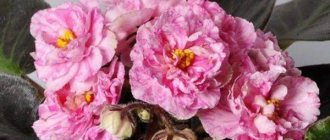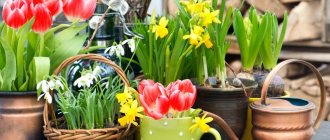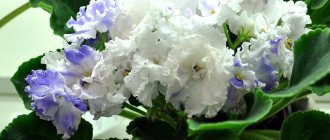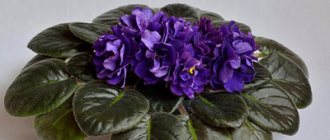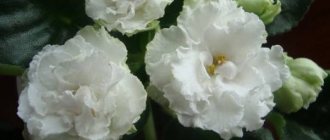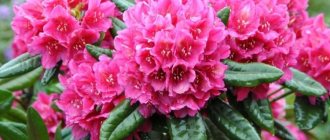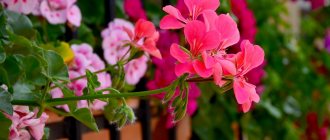Even the most beautiful interior will become cozier and brighter if you add a few pots of flowers to it. Although the market is replete with high-quality artificial clones, nothing can replace a natural flower. He looks more alive and requires active participation in his life. It is interesting and pleasant to watch how it grows, how timidly the buds arise and bloom.
Photo: Pixabay.com
The long and happy life of a plant depends on the right choice. When buying flowers, you need to pay attention to their leaves. There should be no plaque or stains on them. The plant should be strong and not lethargic.
What you need to know about indoor flowers:
- For many, the sun's rays are undesirable; they can leave burns on the leaves.
- They should not be over-dried, but they should not be over-watered either.
- For better flowering, fertilizing is necessary.
- They are constantly growing and require more space, so they need to be replanted in pots of suitable size.
- Many require high air humidity, so they have to be periodically sprayed with water.
- Many people cannot tolerate strong temperature changes and drafts.
- Trimming and plucking is an important ritual in creating a beautiful appearance for a plant.
Today we invite you to plunge into the world of greenery. Our editors have selected 12 of the most beautiful indoor flowers.
Rating:
- Indoor roses
- Azalea
- Crassula
- Geranium
- Clivia
- Croton
- Lithops
- Spathiphyllum
- Hibiscus
- Poinsettia
- Caladium
- Phalaenopsis
Alocasia
This is a very unusual plant with amazingly beautiful leaves. In indoor conditions, alocasia rarely reaches large sizes, so it is great for decorating window sills in small apartments. Like most indoor plants, alocasia needs light, spraying and feeding. Once a year, pale yellow inflorescences appear on the plant. The only downside of alocasia is that it has poisonous leaves and roots, so you should not let animals or small children near this flower.
How and where to properly keep flowers in the kitchen
When determining which plants are best suited for your kitchen, you need to consider the lighting in the room. For the north side, shade-tolerant specimens are selected - the same sansevierias, zamioculcas, ficuses with dense green leaves. And for a well-lit kitchen, you can choose a palm tree, hibiscus, croton or even an orchid.
The most important rule is to find out what plant care requirements are before purchasing. This way you will avoid unnecessary expenses and disappointments.
Even the most unpretentious flowers in the kitchen will not last long if they are placed incorrectly. Here are the following recommendations:
- Plants should not be placed near the sink - none of them will withstand constant splashes of grease and soapy water.
- Flowers in the kitchen should correspond to the dimensions of the room - the more spacious the room, the larger the specimens will be appropriate in it.
- Do not forget that decorative deciduous ones are often more unpretentious than flowering ones. And the latter are very sensitive to lack of light.
- Flowers should not be placed near the stove, above the burners, or near a window open for ventilation (in winter).
- The air at the top is the driest, so the plants located here will have to be watered and sprayed more often.
- Strong-smelling flowers are not the best choice for this room, but fragrant spices will be just right.
- You can also decorate the dining table with potted plants - but it’s better to choose a miniature and completely healthy specimen.
See also the material: DIY paper flowers - 4 master classes for beginners.
Sansevieria
Sansevieria will serve as the best decoration for a minimalist Scandinavian interior. This evergreen plant, popularly referred to as “pike tail” or “mother-in-law’s tongue,” is extremely unpretentious in care - beginning plant growers are recommended to get acquainted with indoor plants with it. Sansevieria produces a lot of oxygen, so its beneficial properties can be compared with ficus.
Bromeliad
Bromeliad is famous among plant growing lovers for its very beautiful flowering. It is impossible to take your eyes off the spectacular and bright inflorescences of bromeliads. This plant can bloom for up to several months. Such beauty, of course, must be maintained with appropriate care - watering should be carried out with settled water, and combined with spraying from a spray bottle. Bromeliad owners have a belief that this flower is especially sensitive to care and love - and therefore it can only bloom in a calm atmosphere. In homes where shouting and swearing are constantly present, bromeliad inflorescences rarely bloom.
Indoor plants in the interior - ideas for placement in different rooms (photo)
Decorative indoor flowers and plants in the interior are designed to decorate the space and also improve air quality. They absorb carbon dioxide, saturating the atmosphere with oxygen. The selection of specific varieties and their arrangement is carried out depending on the main functionality of the premises.
Flowers and plants in the living room (photo)
For a fairly spacious living room, plants of different sizes are used. The area allows light-loving crops to be placed close to windows, and shade-tolerant varieties to be installed near doors, behind cabinets, in corners.
Coffee, olive, and citrus fruit trees become a bright accent in the living room. Large-leaved indoor crops fit into the interior of any style (from noble classics to dynamic high-tech). Palm trees, ficus, dracaena, hibiscus, and oleander are often chosen for spacious living rooms.
It’s easy to decorate a small living room with climbing flowering plants hanging in an openwork cascade from shelves, hanging plant pots and even ceiling mounts. Saxifraga, exotic hoya, and aeschynanthus look good. If desired, you can choose plants that have a light, pleasant aroma that lifts your spirits and relieves irritation.
It is advisable to place plants in the living room that purify the air well, as they have antimicrobial characteristics. This can be begonia, oleander, lemon, as well as geranium and ficus. Beautifully blooming magnificent roses, graceful azaleas, colorful cyclamen, and elegant orchids bring a feeling of comfort and coziness.
To create floral arrangements in the home interior, the prevailing color scheme is taken into account and pots of different textures and shades are used. They provide for the placement of racks, racks, stands, and shelves in a certain order. Wickerwork has an interesting decor.
Flowers and plants in the kitchen (photo)
The limited kitchen area does not usually allow the use of floor-mounted volumetric pots. More often, compact plants are placed in this room, which can be in hanging flowerpots, on light wall shelves or decorating a window sill.
Select varieties of unpretentious indoor plants that can easily adapt to conditions of high humidity and temperature fluctuations. It is recommended to use ivy, tradescantia, cissus, and asparagus for placement on wall shelves. The windowsill will be decorated with violets, chirita, orchids, and chlorophytum, but it is important to provide these crops with protection from direct rays of the sun.
Heat-loving plants such as dieffenbachia, begonia, allamanda, and anthurium are also grown in the kitchen. It is advisable to place aglaonema, clivia, and aspidistra in shaded corners. Plants should not be placed near the stove, sink, or refrigerator. Often the role of a kitchen green corner is played by garden crops, for example, parsley, dill, hot peppers, and onions.
Flowers and plants in the bedroom (photo)
For the bedroom, flowers should be selected very carefully. Do not use crops that have a strong aroma, which can cause insomnia, irritation, and headaches.
Suitable for a room designed to provide comfort and relaxation are Kalanchoe, aloe, spathiphyllum, chlorophytum. The interior will be perfectly decorated with chic miniature roses, delicate Uzambara violets, and delicate miniature ferns. You can put a small lavender bush.
Flowers and plants in the children's room (photo)
The main criterion for selecting plants for placement in a children's room is safety. It is enough to place 1-3 flowerpots here so that they do not cause injury to the child.
Any plant forms with a strong aroma, with thorns and needles, or containing poisonous and toxic elements in the juice are excluded. Pots are chosen from unbreakable material. You can plant chlorophytum, Kalanchoe, Tradescantia, Decembrist, violets, begonia.
Flowers and plants in the bathroom (photo)
Due to insufficient lighting in the bathroom, if desired, you can only place shade-tolerant crops, such as ivy. From time to time the pot needs to be taken out into the light.
In conditions of high humidity, heart-shaped philodendron feels good. It makes a great wall decoration when placed in an elegant hanging basket. A lily that prefers a method of watering such as regular irrigation of the leaves can also grow in the bathroom. Aloe vera adapts well to artificial light.
Bamboo will feel comfortable without bright sunlight, for which moistened pebbles can act as a soil substrate. Chlorophytum adapts well to a variety of conditions.
Considering that fern does not like excessive lighting and prefers regular spraying, it can also be used to decorate the bathroom. Other shade-tolerant crops, for example, cyperus, stromanta, as well as aglaonema and arrowroot, are also suitable for these conditions.
They provide equipment for phytolamps in the bathroom, which will provide an optimal degree of illumination. Pots and flowerpots are chosen from unbreakable material. They must not only be durable, but also securely fastened to prevent injury in confined spaces.
Flowers and plants in the hallway (photo)
In a fairly spacious hallway there is always room to place floor flowerpots with spectacular large plants. Dracaena, yucca, and bottle tree look great here.
If the area is small and dark, then preference is given to unpretentious shade-loving specimens. For example, aspidistra, which has very beautiful large leaves, asplenium fern, captivating with carved greenery, and sansevieria, which decorates the space with luxurious elongated leaf blades, will fit well. On the walls, decorative ivy forms an elegant frame around a mirror or picture.
A variety of indoor flowers and plants in the interior, placed for a specific purpose in rooms of different functionality, create a charming, comfortable environment.

